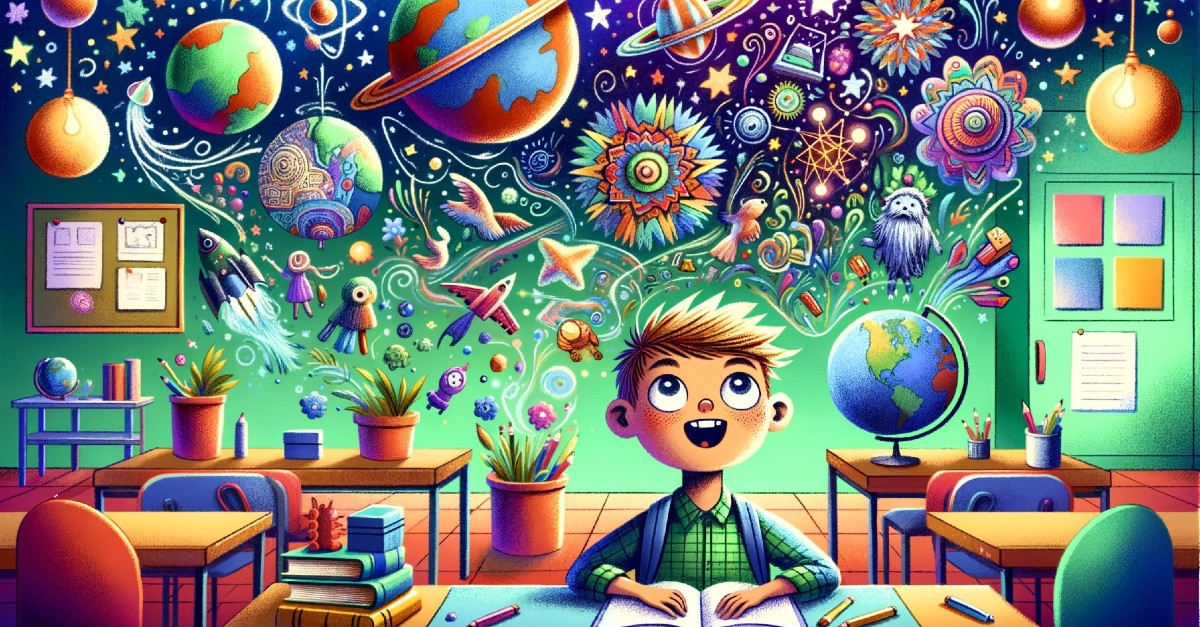In the ever-evolving landscape of education, incorporating technology in the classroom has become increasingly important. As educators, we constantly seek innovative methods to engage our students and foster their creativity. One such groundbreaking tool is Artificial Intelligence (AI). This blog series post introduces innovative strategies for utilizing AI to cultivate rich, human thinking in your classroom.
This strategy is part of a series of Inquiry Insider Blog posts sharing 16 innovative strategies that actually boost learning. To make sure you catch them all, Subscribe to Inquiry Insider!
The Activity: AI as a Creative Partner
The core of this activity lies in using an AI image generator, a tool capable of creating images from textual descriptions. One of the most exciting features of AI tools like Bing Chat, Midjourney, Stable Diffusion, and Craiyon is that they can take an idea and bring it to life in picture form. By showing a picture to the class and challenging student groups to write a prompt that would lead the AI to reproduce this image, we embark on an adventure that merges art, language, and technology.
Step 1: Choose an Inspiring Image
Begin by selecting or creating an image that is rich in detail and open to interpretation. This could be a famous painting, a scenic photograph, or any image that sparks curiosity. Maybe you want to include a picture that highlights several of the concepts you’ve been studying. The key is to spark student thinking. Once you’ve selected your image, present it to the class and discuss its various elements – things like content, colors, action, and style.
Step 2: Divide and Conquer
Divide the class into small groups, each tasked with writing a detailed prompt that describes the image in a way they think will lead the AI to recreate it accurately. This exercise challenges students to be observant, precise, and descriptive. It’s not just about what they see, but how they articulate it in words.
Step 3: Experiment with AI
Once the groups have crafted their prompts, input each into the AI image generator. This is where the fun begins! As each group’s version of the image is generated, students will witness firsthand how their use of language can influence digital creation.
Step 4: Compare and Contrast
After all the images are generated, it’s time to compare them with the original. Which group’s prompt led to an image most resembling the original? Hold a class vote to decide — allow students to vote for any image other than the one they prompted. Discuss how AI’s creation diverged from the intent of each group, and how they may have crafted their prompt differently to bridge this gap. This step encourages critical thinking and a deeper understanding of how AI interprets human language.
Educational Benefits
This activity enhances students’ observation and descriptive writing skills as they learn to notice and articulate fine details. It also fosters teamwork and collaborative thinking, as well as providing practical experience with AI technology, understanding its capabilities and limitations in interpreting human instructions.
Integrating This Strategy in Your Teaching
This AI image generation activity can be easily integrated into various subjects, from language arts to social studies, and even science. It’s adaptable for different age groups and can be tailored to fit specific learning objectives, such as vocabulary development, storytelling, or digital literacy.
Conclusion
To make the best use of AI, we need to find ways to use it to encourage deep, human thinking. By challenging students to interact with AI in imaginative ways, we not only enhance their learning experience but also prepare them for a future where technology and human creativity intersect. This image generation activity is just one example of how we can use AI to take steps towards a more innovative and engaging learning environment.
